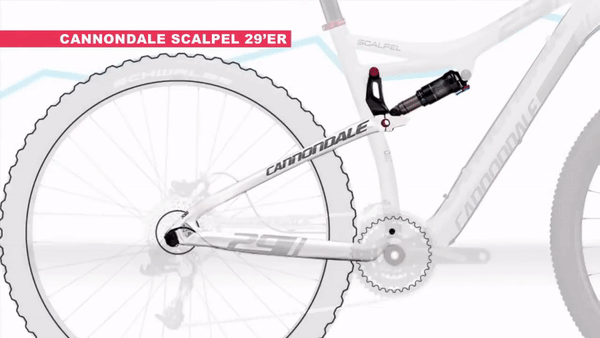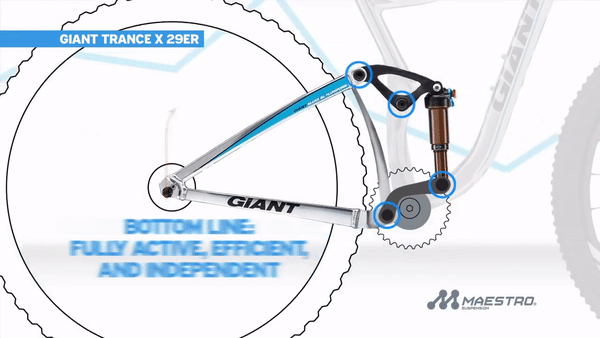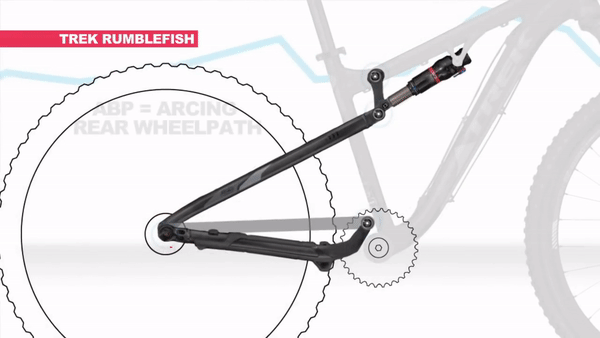Mountain bike suspensions have come a ways since around 1983 when the first rear suspension was designed by Brian Skinner on a bike called the MCR Descender. Designs are still evolving as you can appreciate from the below:
Bikes with a rigid connection to the rear wheel are called ‘hardtails’, bikes with a suspended connection are called ‘rear suspension bikes’, and bike have both rear and front suspension are, as you might imagine, called 'full suspension' bikes.
Since suspension involves tradeoffs between absorption, pedaling efficiency and braking efficiency, there is no single optimum and hence a range of designs.
Against this background, Knolly of Burnaby, British Columbia, is suing Intense for patent infringement of the rear suspension design described in US 10,363,988 granted to Knolly CEO Noel Buckley, granted in 2019. The suit was filed Dec. 2020 as 'Knolly Bikes Inc. v. Intense Cycles, Inc.' [2] .
The patent describes a suspension linkage and frame design that includes a seat tube that is angled so its axis meets the downtube above and in front of the bottom bracket. The patent describes a system with at least four inches of travel with optimal traction, rear brake interaction, and pedaling efficiency while also allowing the seatpost to be inserted at least four inches into the seat tube.
The patent also claims a seat tube intersecting the downtube above the bottom bracket at an angle between 50° and 75° relative to the horizontal.

The suit claims that six of Intense's models infringe on this patent - the Tracer, the Carbine, the Tazer e-bike, the Primer 29, Primer S and Primer 27.5 - and that Knolly believes and has information that Intense has examined Knolly's bikes that use the technology.
B.R.A.I.N (Bicycle Retail And Industrial News, sort of like K.A.O.S., see below)
reports that Knolly is asking for a jury trial and to be awarded damages and attorney fees.
The suit charges that Intense infringes on the patent on at least six of its models: the Tracer, the Carbine, the Tazer e-bike, the Primer 29, Primer S and Primer 27.5.
Knolly claims to have information to the effect that Intense has examined Knolly's bikes that use the patent.
Abstract [3]
A bicycle suspension system includes a frame with a downtube and a seat tube, a bottom bracket, a rear wheel, a rear suspension, a rear shock absorber, and a linkage connecting the rear shock absorber and the rear suspension. The seat tube is disposed along a longitudinal axis, is configured to receive a seat post, and allows at least four inches of adjustability of a position of a seat saddle connected to the seat post. The bottom bracket is connected to the frame. The longitudinal axis of the seat tube intersects the downtube at a location spaced apart from the bottom bracket and is disposed at an angle between 50° and 75° degrees relative to horizontal. The rear suspension connects the rear wheel and the frame and controls movement of the rear wheel though a range of vertical travel of the rear wheel of at least four inches.
A bicycle having a rear wheel, said bicycle comprising:
(a) a frame orientable in a vertical plane, said frame comprising a top tube, a down tube having a bottom bracket at a bottom end thereof for receiving a pedal assembly, and a seat tube coupled to said top tube and configured for receiving a seat post within an upper portion of said seat tube;
(b) a rear suspension for pivotably coupling said rear wheel to said frame;
(c) a rear shock absorber mounted on said frame; and
(d) a linkage pivotably mounted on said frame for coupling said rear suspension to said shock absorber for controlling the wheel path of said rear wheel, wherein said upper portion of said seat tube comprises a linear tubular sleeve having an opening at an uppermost end thereof for receiving said seat post and wherein at least said upper portion of said seat tube has a longitudinal axis coaxial with said sleeve that intersects said down tube at a location spaced forwardly and upwardly from said bottom bracket, wherein said upper portion of said seat tube configured to receive said seat post is of a sufficient length to enable at least 4 or more inches of adjustment of said seat post within said seat tube along said longitudinal axis to adjust the position of a seat saddle mounted on said seat post, wherein said longitudinal axis of said seat tube extends at an angle within the range of 50-75° relative to a horizontal plane passing through said bottom bracket perpendicular to said vertical plane, and
wherein said longitudinal axis extends tangentially relative to the most forwardly intrusive position of said rear wheel and said rear suspension when said rear suspension is under full compression.

[2] Knolly Bikes Inc. v. Intense Cycles, Inc.' at California Central District Court with case number '5:20-cv-02571'.






Comments